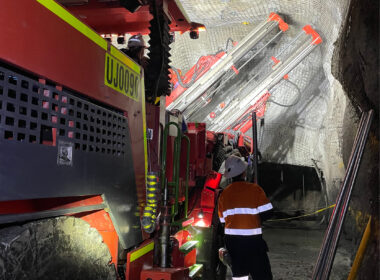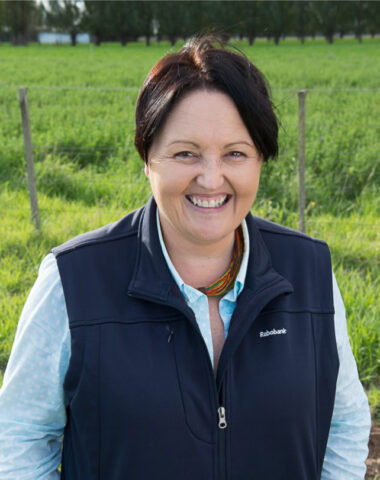
Global urea supplies currently sit in a fragile state, with several key suppliers exporting lower volumes year-on-year, which creates a “ripple effect” for available volumes for Australian fertiliser importers, Rabobank says in a newly-released report.
The agribusiness banking specialist says urea is by far the most widely-traded fertiliser in the world and, for Australia, represented nearly half (46 per cent) of total fertiliser imports in 2024.
In the report, What tight urea supplies mean for global prices and Australian farmers, the bank’s RaboResearch division says due to minimal volumes of urea produced domestically, Australia is particularly sensitive to global events.
Report author, RaboResearch farm inputs and commodities analyst Paul Joules said the urea market is expected to remain volatile due to complex supply chains and geopolitical influences, with prices elevated compared to historical averages. “Ongoing supply issues in key exporting regions and the sensitive nature of natural gas markets – the predominant feedstock for urea production – suggest that urea prices will likely stay high,” he said.
Mr Joules said given complex supply chains, urea prices tend to trade with considerable volatility. “At present, prices are trading around the five-year average. However, if we were to compare current prices with the pre-Russia-Ukraine war five-year average price, they are 40 per cent higher,” he said.
Mr Joules said in addition to geopolitical issues impacting fertiliser prices and availability, natural gas is the other key influence within the market. “The sensitivity of natural gas markets – to both weather and geopolitical events – adds to the volatility of urea prices,” he said.
The RaboResearch report said while the majority of the chief urea-producing regions and countries (Europe, Iran, Egypt and China) that are experiencing supply issues do not directly supply Australia, “they still account for global losses to the supply, which creates a ripple effect for available volumes for Australian importers”.
In 2024, 79 per cent of Australian urea imports came from the UAE, Saudi Arabia, Qatar, Indonesia and Oman.
Australian dollar
Mr Joules said although global supply and demand factors will continue to influence Australian urea prices, the other major impact is foreign exchange rates.
“The bank expects the strong outlook for the US dollar is likely to keep the AUD weak in 2025,” Mr Joules said.
“RaboResearch anticipates the Australian dollar to remain relatively weak, with the cross expected to reach 0.65 on a 12-month view. Ultimately, for urea – and other imported goods – this means farmers will most likely continue to face a currency headwind throughout 2025.”
Mr Joules said, in terms of urea price outlook – “when we combine the 12-month view of a relatively weak Australian dollar, alongside the tight supply outlook, it’s difficult to justify a call for lower prices for Australian farmers in 2025”.
The bank’s base case view is for urea prices to likely remain around current elevated levels in 2025.
Local production
The report said 3.85 million tonnes of urea was imported into Australia in 2024 (which represents over 90 per cent of its usage) – making it by far the most imported fertiliser locally.
Mr Joules said the local farm-inputs sector is questioning whether Australia can successfully reduce its import dependence via local urea production in the near future.
“At present, there is not a definitive answer to this question, however there are a number of ongoing projects, which make use of Australia’s natural gas resources,” he said.
“Two of the most promising projects are planned in South Australia and Western Australia. Assuming these projects were both to go ahead, that would mean production would total 3.3 million tonnes – 0.55 million tonnes behind Australia’s total imported volume of urea in 2024.”
However, Mr Joules said, it is unlikely Australia would switch from relying largely on imported to volumes mainly on domestic supplies in the near future.
“This is due to the economics of internal shipping versus international exports,” he said. “Freight costs from South Australia and Western Australia to agricultural regions in other states are high and, from a urea producer’s standpoint, shipping at least some volumes overseas – via well-established international shipping networks – would likely be viewed as the most economically-viable option.
“At certain times of the year, high demand from South-East Asia and India could potentially absorb a sizeable amount of any Australian-produced volume, and it may well make more economic sense to export volumes abroad, as opposed to shipping to parts of Australia which are far away from the proposed plants.”
And while Australia may increase internal urea production, Mr Joules said, it is unlikely to completely eliminate reliance on imports.
“Although the proposed domestic urea projects can provide some benefits – especially during supply shocks – significantly lower prices are not anticipated solely from these proposed developments,” he said. “Domestic urea prices are expected to align closely with global levels, as it is anticipated Australian producers will base pricing on global benchmarks.”
Mr Joules said the primary drivers for urea prices in Australia will continue to be global supply and demand factors.
<ends>
RaboResearch Disclaimer: Please refer to Australian RaboResearch disclaimer here
Media contacts:
Denise Shaw Will Banks
Media Relations Media Relations
Rabobank Australia & New Zealand Rabobank Australia
Phone: 02 8115 2744 or 0439 603 525 Phone: 0418 216 103
Email: [email protected] Email: [email protected]
About us:
Rabobank Australia & New Zealand Group is a part of the international Rabobank Group, the world’s leading specialist in food and agribusiness banking. Rabobank has more than 125 years’ experience providing customised banking and finance solutions to businesses involved in all aspects of food and agribusiness. Rabobank is structured as a cooperative and operates in 38 countries, servicing the needs of more than nine million clients worldwide through a network of more than 1000 offices and branches. Rabobank Australia & New Zealand Group is one of Australasia’s leading agricultural lenders and a significant provider of business and corporate banking and financial services to the region’s food and agribusiness sector. The bank has 87 branches throughout Australia and New Zealand.



